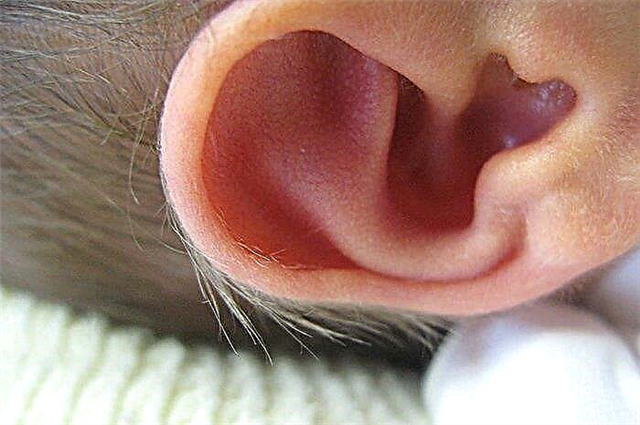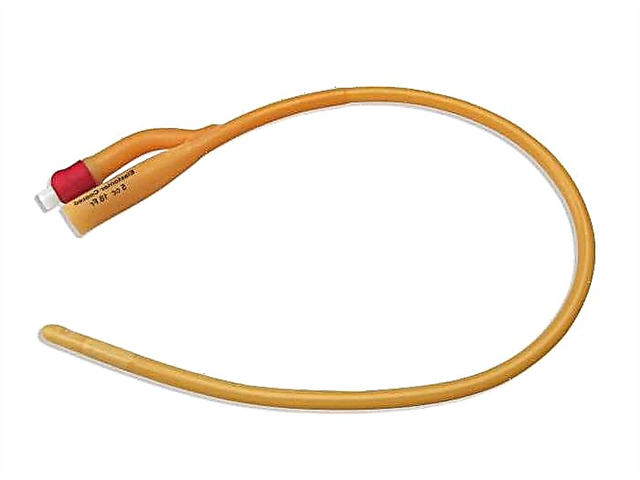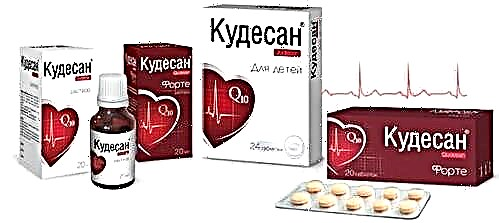Various analyzes allow to assess the health of the baby. Among other things, you have to take the stool of the little one. What the child's stool coprogram shows is important to know not only to the attending physician - the test results should also be deciphered by parents.

Laboratory research of biomaterial
What is coprogram
Sometimes in the hospital, babies take a swab from the anus. More often you have to take a general analysis of feces, called a coprogram. When a child is prescribed this study, some mothers are worried, associating this with a suspicion of dysbiosis.
In fact, the coprogram is a more general test compared to other types of tests. Fecal examination allows:
- get complete information about the general condition of the digestive system;
- deal with problems affecting the liver and biliary tract;
- detect infectious diseases;
- identify the presence of negative microorganisms;
- to clarify whether there is a hereditary factor in the failure of metabolic processes.
Based on the foregoing, one can understand what this is scatology of feces in infants and older children. The study of stool from a scientific point of view helps to consider the condition of the child from the perspective of 2 aspects: medical and biological.
The comprehensive study of feces includes the analysis of the chemical and physical properties of the feces submitted for analysis, the detection of characteristic and unnatural inclusions (including signs of blood). In this case, the age of the baby and the characteristics of feeding are taken into account.
When a stool test is prescribed
Stool analysis is not a routine annual study - it is prescribed when a child has problems with the gastrointestinal tract. The direction can be prescribed by a pediatrician, surgeon, gastroenterologist, infectious disease specialist based on the symptoms found in the newborn.
Indications for taking a coprogram
- Increased frequent gas formation and bloating.
- Pain in the peritoneum.

Tummy problems
- Discoloration of faeces and their consistency.
- The presence of blood clots in the stool.
- Recurrent nausea, often progressing to vomiting.
- Poor appetite in an infant with a sharp decrease in body weight.
- Yellowness of the dermis and whites of the eyes.
- Poor condition of nails, hair, skin.
The coprogram will confirm or refute the suspicion of the presence of pathology. The effectiveness of the therapy is judged by the next portion of feces sent for analysis.
How to donate feces for coprogram
It is easier to take biological material in potty trained children. With a baby, the situation is more complicated. For the result to be reliable, the mother must know how to pass the coprogram correctly to the child in the first months of life.
Note! The feces collected in the diaper are not suitable - the liquid component of the feces is absorbed into the diaper. We'll have to wait for the baby to poop on the diaper.
How to prepare your child for analysis
No special preparation is required for the procedure. Before putting the baby on the diaper, they wash him away. If the baby pees before pushing, the litter is replaced - no urine should get into the feces.
You should not specially stimulate the baby's intestines with laxatives and enemas - this will distort the indicators. You must wait for a natural bowel movement.
To collect feces from a child who is already on medication, appointments are temporarily suspended (if possible) so that third-party chemical formulas do not blur the test result. For a day, excludes taking medications and a mother who is breastfeeding.
How to collect feces
There is no need to hand over all the material on the diaper - you only need a couple of teaspoons of feces. They are placed in a special plastic jar with a tight-fitting lid. These are sold in pharmacies and are inexpensive.

Feces collection container
It is not recommended to take another container (for example, from under mashed potatoes). Even with thorough washing, food particles remain on the inside of the can.
Is it possible to collect feces in the evening
Usually laboratories take tests in the morning (usually before 10-11 hours). If the mother is not sure that the baby will poop after the night, it is allowed to collect feces in the evening (at night). The jar is tightly closed with a lid and sent for storage in the refrigerator. In the morning, the material for the coprogram is immediately sent to the laboratory.
Note! Sowing is suitable for research within 6-8 hours after collection.
Decoding of coprogram indicators in children
The feces of a child on gv and artificial feeding are slightly different in structure and composition. Even for one baby, these characteristics vary over a certain period.
The bulk of the feces is water. The dry part is pieces of undigested food and live microorganisms in equal proportions. Any other variations of the material under study is a reason to suspect the pathology of the organs of the gastrointestinal tract and other body systems.
Having found out what kind of analysis of the coprogram in a baby is, it is easier for parents to decipher the indicators provided by the laboratory.
Stool consistency
The baby's stool depends on what the baby is eating. In newborns and children under 2 years of age, feces are not fully formed and resemble porridge. A child on IV can poop with "sausage". Breast toddler defecates with a liquid mass, similar in consistency to sour cream. With the introduction of complementary foods, the stool thickens, but remains soft. In case of problems with the gastrointestinal tract, the structure of the stool is modified.
Shade
Normally, feces in children of the first year of life have a yellow color. During the aging period, slight admixtures of green are allowed. As soon as solid food is included in the baby's diet, a brown tint is added to the yellowness. By the age of 2, feces are similar in color to an adult.

Feces
Note! The bright pigment of the complementary foods will briefly color the feces in the appropriate shade (pumpkin, rhubarb, beets).
Smell
The feces of a newborn on HS smell like sour milk. Artificials have a similar aroma, but it is more pronounced. Complementary food changes the smell, making it close to fecal.
PH reaction
The baby's feces are checked for acid. Ideally, the reaction of the test mass should be neutral or slightly alkaline. In infants, a slight deviation in the acidic direction is allowed at first. Children who consume a cow product have a more pronounced alkaline index.
Protein
This component should not be in the analyzes. Protein in a child's stool is, at best, evidence of undigested food. More often this is due to inflammatory processes in the intestines, the presence of exudate or bleeding that has opened.
Occult blood reaction
If the intestines are in good order, scatological analysis will show no signs of blood. It appears with defects in the development of the intestine, inflammation, allergies, polyps, hemorrhoids, cracks in the rectum or with its prolapse.
The presence of bilirubin
The reaction to the breakdown product of hemoglobin is permissible up to the age of 3 months. Later, when useful microflora appears in the baby's intestines, bilirubin is transformed into another enzyme - stercobilin. It gives the feces a brown tint.
Slime
This component of the intestine protects its walls from the aggressive effects of feces. Normally, there should be a little whitish or transparent mucus at the exit, and it mixes with feces. If there is too much jelly-like discharge, there is a suspicion of an inflammatory process. In babies who are breastfed, abundant mucus during the pre-feeding period is permissible.
Leukocytes and erythrocytes
The first months after birth, small amounts of white blood cells may be present in the baby's feces. A high indicator indicates damage to the intestinal walls and inflammation that has begun.

Impurities in feces
Large numbers of red cells are a dangerous sign of bleeding in the rectum or colon.
Connective tissue and muscle fibers
These components should not be present in the baby's feces before the introduction of complementary foods. If tissues and fibers are found, it is recommended to examine the pancreas. Disorders of the digestive system and various inflammations lead to a similar problem.
The presence of fiber
In children under one year old, the presence of undigested plant food residues in the feces is allowed. Fiber in feces does not indicate problems with the digestive system, but about the rapid passage of products through the digestive tract.
Detritus
Check the feces and the amount of digested food, as well as the presence of dead bacterial cells. Detritus is normally expressed as an insignificant indicator. A deviation upward in combination with other parameters indicates the development of pathologies and requires additional examination of the baby.
Neutral fats
Up to 6 months, a small number of them is the norm. Subsequently, when a child's fat is found, it is necessary to examine for diseases of the small intestine, pathology of the liver or pancreas.
Starch
This is another sign that the digestive system and pancreas are not working well. The presence of an intestinal infection is possible.
Flora iodophilic and clostridine
The increased growth of bacteria indicates the development of dyspepsia, which is characterized by a violation of the process of food digestion. Malfunctions of the pancreas, small intestine, and stomach can also affect the development of flora.
Insufficient fermentation of food leads to rotting of the protein substances collected in the digestive tract. This contributes to an increase in the number of special bacteria - clostridins.
Crystals
Serious disruptions in the work of the gastrointestinal tract and diseases lead to the appearance of chemicals in the feces. Crystals in stool can show one of the reasons:
- if triple phosphate is detected, this is a sign of the vigorous activity of putrefactive pathogenic bacteria;
- hematoidin is formed with internal bleeding;
- Charcot-Leiden crystals indicate that helminths are present, and the body responded to them with an allergic reaction.
In the latter case, crystallization affects proteins involved in metabolic processes.
Yeast fungi
Such organisms cause intestinal infections. Fungi replace the beneficial microflora that died as a result of a decrease in immunity or under the influence of antibiotics and other strong medicines.

Yeast-like fungi in the intestines
Results in the table: norm and deviations
Deciphering the coprogram in a child will allow you to determine the degree of the baby's health and identify serious gastrointestinal diseases (if any). The research results are summarized in a table and are comparative in nature with reference to normal indicators.
Interpretation of the coprogram results
| Index | Norm | Deviations |
|---|---|---|
| Consistency | Dense, decorated. It can be soft and hard, depending on the presence of water (about 65-85%). | The water content in the stool is higher than normal leads to the development of diarrhea. Less than 60% fluid makes the stool hard and indicates dehydration. |
| The form | Cylindrical | A change in shape can be a sign of osmotic, secretory, or mixed diarrhea. |
| Colour | All shades of brown, yellow (sometimes olive) | Black and red stool is a sign of bleeding. Discolored - due to problems with the biliary tract. |
| Smell | Sourish, fecal | It can increase with an excess amount of protein foods and low intake of plant foods. A strongly pronounced sour smell indicates fermentation and impaired fermentation. Fetid amber is evidence of putrefactive processes. |
| PH reaction | 7.0 – 9.0 | An acid reaction occurs against the background of active bacterial decomposition of carbohydrates. |
| Slime | In small quantities | Deviation from the norm indicates serious problems |
| Detritus | Moderate amount | |
| Leukocytes | Single manifestations | |
| Erythrocytes | 0-1 | |
| Muscle fibers | Unchanged - absent, modified can be present in any quantity | |
| Intestinal epithelial cells | Small quantities are allowed | |
| Plant fiber Fatty acid Soap Clostridine | Small indicators | |
| Blood Leftover undigested food Neutral fat Starch Crystals Iodophilic flora Yeast-like mushrooms | Completely absent |
Deciphering the coprogram in an infant should be dealt with by a doctor observing the child. If, on the basis of the study, treatment was prescribed, at the end of it, repeated tests are taken and compared with the previous ones.

Analysis transcript option
In case of health problems of a small child, it is necessary to be examined in a timely manner. It is important to know what the coprogram of the stool taken from the baby shows. With the help of this test, it is easy to detect the slightest deviations that have affected the gastrointestinal tract.



